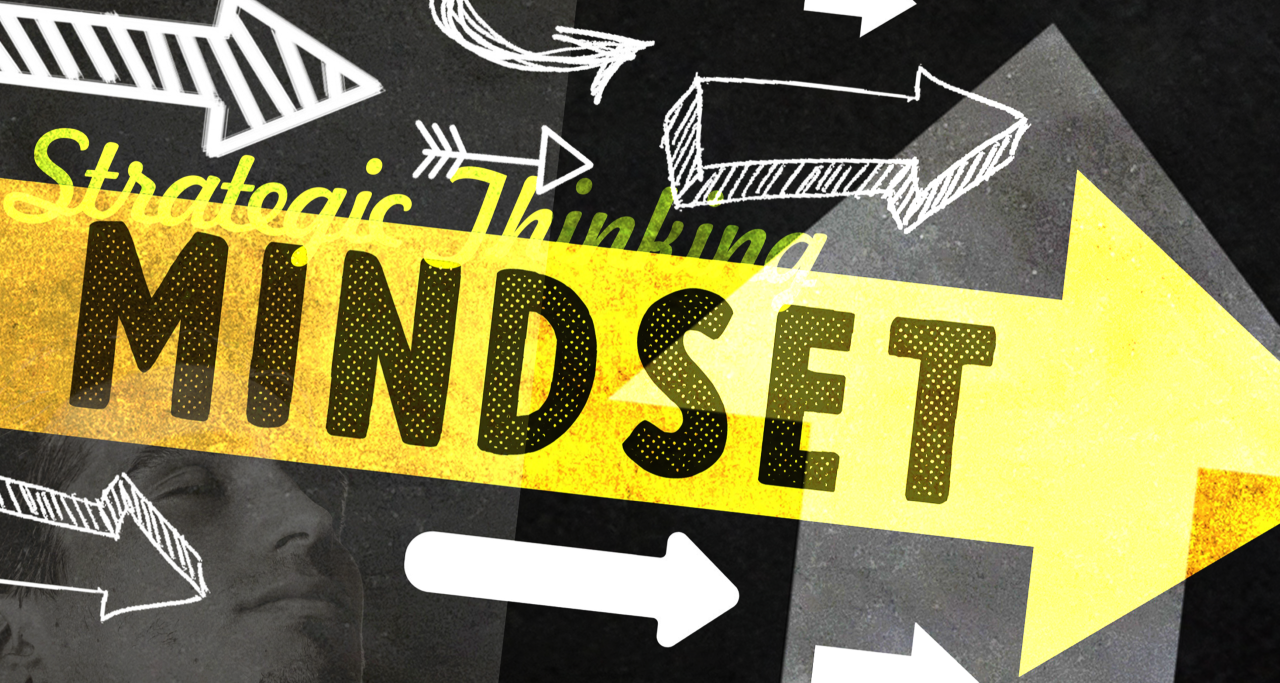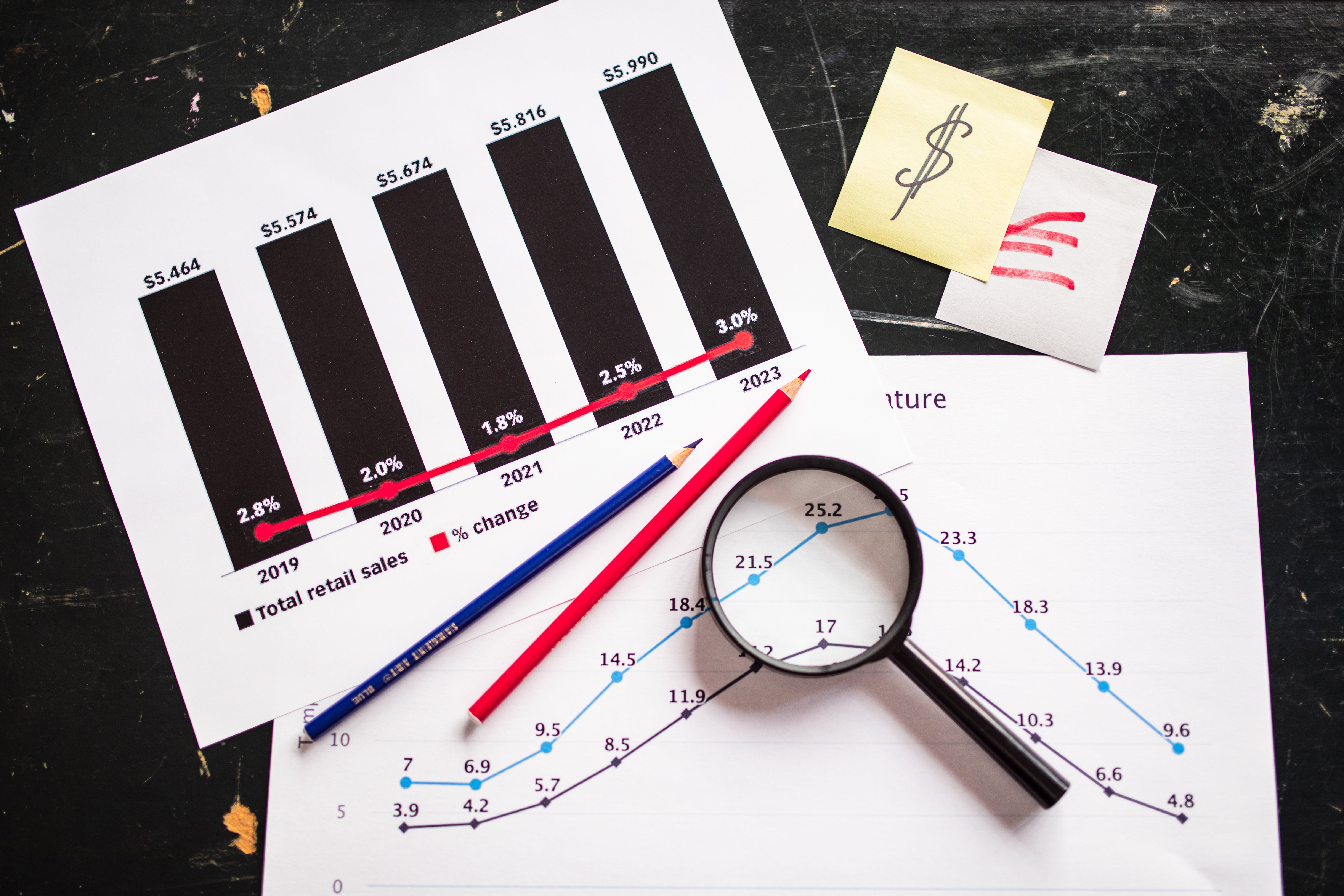Five Dimensions of a Strategic Mindset Every Leader Can Strengthen

In our previous post, we compared strategic decisions (big, consequential, upending, directive) to day-to-day operational or business decisions. But we quickly pointed out that strategic thinking (a comprehensive, integrative view of today, tomorrow, and the next decade) was a capability the most successful businesspeople demonstrate each day. So, what does an effective strategic thinker look like?
The science and art of strategy require leaders in any size company to develop a strategic mindset. From our perspective, mindsets are simply behavior—how you use your skills, abilities, and knowledge to succeed in different settings. Mindsets filter how we make sense of the world and ourselves. According to Carol Dweck in Mindset, The New Psychology of Success: How we can learn to fulfill our potential, “mindsets impact our choices and decisions.”
The components of a mindset are things you can learn or build proficiency in. We emphasize this because the most important thing budding strategists must understand is that everyone can build a strategic mindset. Once you develop the capability, you can continually strengthen those underlying skills, abilities, and knowledge.
What is a strategic mindset?
It’s the ability to mentally navigate an ambiguous future, effectively problem-solve, embrace change to be innovative, and make effective decisions. Five capabilities are essential to demonstrate a strategic mindset:
- Foresight: Thinking about an uncertain future, anticipating problems, and pivoting to address challenges or quickly overcoming obstacles.
- Being Inquisitive: Asking purposeful questions meant to target a problem. Also, being unafraid to break the mold and challenge convention in your thinking about the challenge.
- Agility: Demonstrating the ability to balance your understanding of current plans while continually assessing new options; and being comfortable pivoting to address opportunities or challenges.
- Comfort with abstraction: Showing ease working with unclear information—using inferential knowledge to gain unique perspectives and ideas. Think of it as connecting the dots and seeing patterns where others see nothing but chaos.
- Focusing on relevant information. Considering past, present, and future business performance in relation to short-term, mid-term, and long-term goals. Avoiding the tendency to follow anecdotal red herrings that seldom provide you with valid insights.
Every businessperson can develop their strategic mindset by understanding the behaviors and knowledge that lead to highly-effective, strategic decisions. Once you know what it takes to build a great strategy, you can look in the proverbial mirror and self-assess your strengths across the varied dimensions of strategic thinking. Then, it’s up to you. As we always say—the slightest improvement in your capabilities will move the mean of your leadership…and you will achieve exponential results.
This post is the second as part of a two-part series on strategic thinking.
- Associate Development (1)
- Business News (1)
- Business Planning (3)
- Business Resources (2)
- Communication (3)
- Decision-Making (3)
- E.I. (1)
- Finance & Accounting (1)
- High-Performing Teams (1)
- Inspiration (1)
- Management (3)
- Operations (1)
- People Skills (1)
- Self-Awareness (2)
- Small Business (3)
- Strategy (3)
- Business Growth (6)
- Finance (3)
- From 50 to 500 (3)
- General (2)
- Leadership (8)
Too Fast or Too Slow – Growth Can Still Cause the Same Cash-Flow Problem
Over the past few months, I’ve come across two companies facing serious cash-flow challenges but for completely opposite reasons. As I’ve discussed in previous blogs, cash flow is one of the most common challenges for growing companies. When you read the cases you may think they have cash issues because they are fairly new and small in size. However, in both of these examples the companies have been around for a while and both are in the hundreds with regards to number of employees.
Strategic Thinking in Your Decision Making
Businesspeople in all sizes of growing companies, routinely encounter tough decisions, challenging problems, and complicated situations. In an ideal world, leaders could rely on highly structured frameworks supported by rich datasets to point them toward great choices.
Beyond a Feeling: Emotional Intelligence Is Not the Holy Grail of Assessment
Emotional intelligence (EI) is a term thrown around often, especially in professional development. We’re told that those with high EI are better leaders, better communicators, and, overall, more successful. But is there actual science behind the hype?
10 Tips to Scaling a Small/Midsized Business
Hardly anyone focuses on the challenges you have as a leader of a small business that is established and growing. It really doesn’t matter if you are a leader with around 20 employees and growing or 100 employees and growing. After working with tens of thousands of leaders over the last 25 years, research, and my own experience growing a business to around $100M, I have these 10 tips for scaling your small to midsized business.






